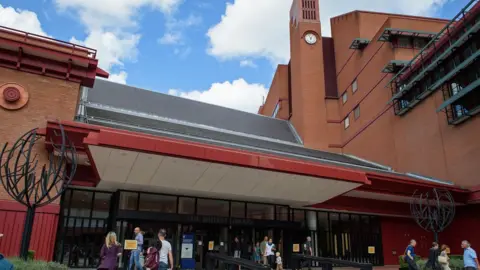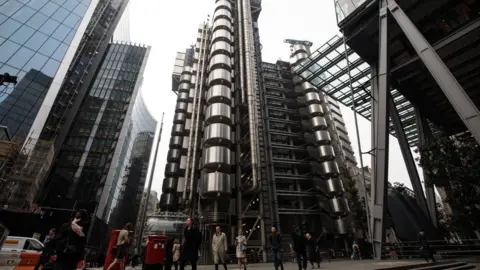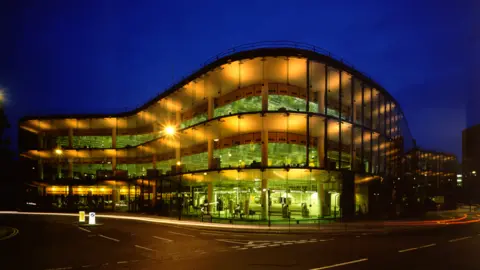England's youngest Grade I listed structures
 Historic England/PA
Historic England/PAThe Humber Bridge has been given Grade I listed status - becoming one of only six structures built in England since 1961 to be afforded the honour.
Constructed between 1973 and 1981, the recognition by the Department for Culture on the advice of Historic England designates the bridge as being of "exceptional interest".
Only 2.5% of England's 500,000 listed buildings and structures are Grade I. Those less than 30 years old will not normally be considered for a listing unless they are under threat.
So what are the most-recently built structures that find themselves in the same league as St Paul's Cathedral, Hadrian's Wall, Chatsworth House - and now the Humber Bridge?

The British Library, King's Cross, London
 Getty Images
Getty ImagesDesigned by Colin St John Wilson and MJ Long, the British Library has been described by Historic England as "both immense and extraordinary" and "arguably the most significant new public building of the later 20th century".
Built between 1982-97, the library is said to "hold its own" amongst a parade of Grade I buildings in the area, including St Pancras Hotel and Station and King's Cross Station.

Lloyd's Building, City of London
 Getty Images
Getty ImagesRichard Rogers was said to have secured the commission for the new headquarters for Lloyd's of London because he was able to develop a strategy for the insurance broker to continue to trade through building operations anticipated to be "complex and protracted".
Built between 1978 and 1986, the Lloyd's Building was listed for the architecture innovation of its "inside out" design, historic interest and "timelessness" - a structure which looked to Victorian as well as mid-20th Century buildings for inspiration.

Willis Building, Ipswich
 Nigel Young/Foster + Partners
Nigel Young/Foster + PartnersGlobal insurance broker Willis, Faber and Dumas commissioned Norman Foster to design a "distinguished" building that would be "neither over-ambitious nor pedestrian", and for an "office environment sympathetic to human values".
Hailed internationally shortly after completion in 1975, and the winner of several architectural awards, its innovation, says Historic England, includes a "glass curtain walling" that reflects the surrounding buildings, its open office plan and the first use of escalators in such a building.

Kingsgate Bridge, Durham
 Alamy
AlamyA reinforced concrete footbridge across the River Wear, in Durham may not seem an obvious candidate for Grade I listed status. But Ove Arup's 1963 design is described by Historic England as "dramatic, beautifully detailed and ingenious".
The bridge, commissioned by the University of Durham, consists of two trough shaped lengths of deck, supported by V-shaped legs and is said to symbolise the "connection" of the town and the institution.

Severn Bridge and Aust Viaduct, South Gloucestershire
 Getty Images
Getty ImagesThe motorway bridge over the River Severn and its eastern approach viaduct was listed in 1998. Built between 1961 and 1966, the crossing was designed by Freeman Fox and Partners in association with Mott, Hay and Anderson and consulting architect Sir Percy Thomas as part of the first Severn crossing for the M4.
A suspension bridge, it was the first in the world to use the then "revolutionary concept" of a streamlined deck and inclined hangers. It also has an early example of a fully-welded steel deck.

